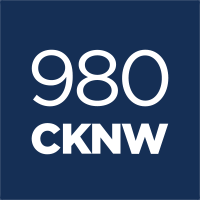The group hoping to change the way British Columbians elect their politicians has launched its campaign in support of proportional representation (PR).

At its core, a system of proportional representation directly links the percentage of the vote a party wins in an election to its share of seats in the legislature.
Voters will be asked in a two-part referendum this fall if they want to keep the current first-past-the-post (FPTP) system, or switch to one of three PR systems.
Vote PR launched its campaign on Vancouver’s Commercial Drive on Sunday, and spokesperson Maria Dobrinskaya said supporters are now conducting outreach in about 10 cities.
She said campaigners will be highlighting what they see as the main flaws of the current system.
“The distorted outcomes, with 40 per cent of the vote governments get 100 per cent of the power, safe seats, and then frustrations with strategic voting, voters sort of plugging their noses and voting for the least-worst option. All of those experiences are really familiar to voters.”
Dobrinskaya argues that under the current system, about seven in 10 British Columbians vote in a so-called “safe seat,” in which one party is almost guaranteed a win.
“If you’re a BC Liberal voter in Vancouver-Mount Pleasant, a BC NDP voter in Kelowna, the outcome of that election is largely determined before you even cast your ballot,” she said.
Dobrinskaya said campaigners will also argue that PR systems are not overly complicated — a key criticism of opponents — and that 85 per cent of OECD countries use them.
“I think it’s worth noting as well that all jurisdictions that have moved from a first-past-the-post system to a PR system have chosen to keep it,” she said.
WATCH: Electoral reform referendum question subject of fiery legislature exchange

Opponents of PR argue that the system will consistently create unstable minority governments prone to backroom deals that will decide who holds power.
They also argue that PR systems that use a party list to create proportional outcomes by “topping up” seats in the legislature give power to party insiders who write those lists.
Dobrinskya argues that those lists can be made public so voters are informed, and that current “safe seats” already allow unelected party executives to parachute chosen candidates into those ridings.
- B.C. officer alleged sexual assault, CSIS had her investigated
- Alberta to overhaul municipal rules to include sweeping new powers, municipal political parties
- Military judges don’t have divided loyalties, Canada’s top court rules
- Norad looking to NATO to help detect threats over the Arctic, chief says
The referendum process itself has been heavily criticized by the BC Liberals, who have called it a “rigged game,” and say voters should be provided with mock riding maps under all three proposed systems before voting.
Under the proposed PR systems B.C. will choose from — Dual Member Proportional, Mixed Member Proportional, and Rural-Urban PR — there would be little or no expansion to the number of MLAs in the legislature.
Under all three proposed systems, B.C. would keep territorial ridings, though some would be larger, and British Columbians would still elect a majority of MLAs directly.
Parties would have to win at least five per cent of the vote in order to qualify for PR seats (though individuals could still be elected by winning a riding).
The referendum will be conducted by mail-in ballot from Oct. 22 to Nov. 30.








Comments